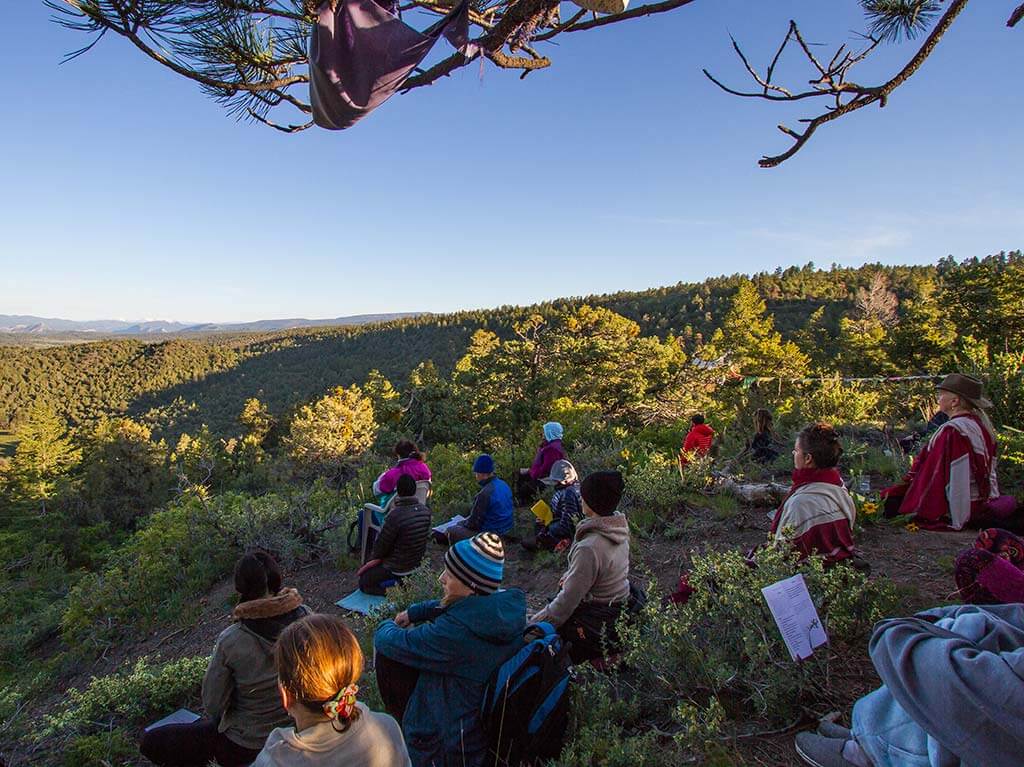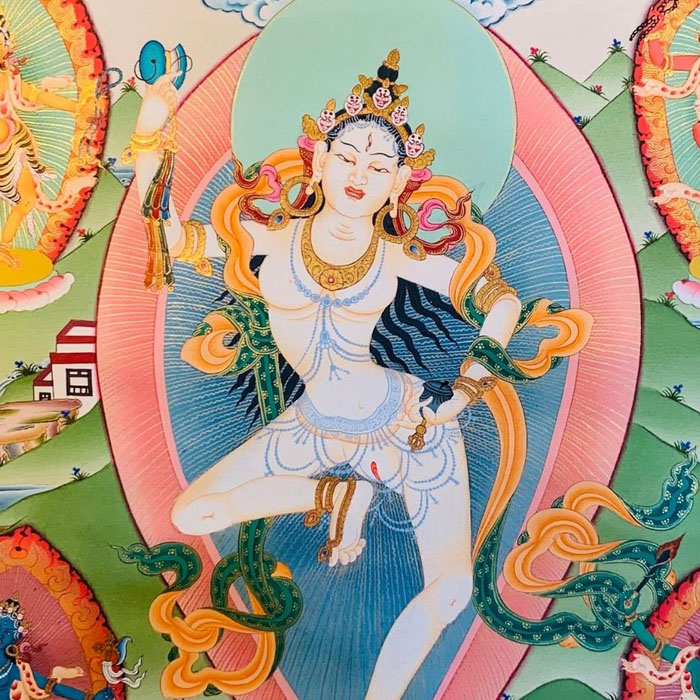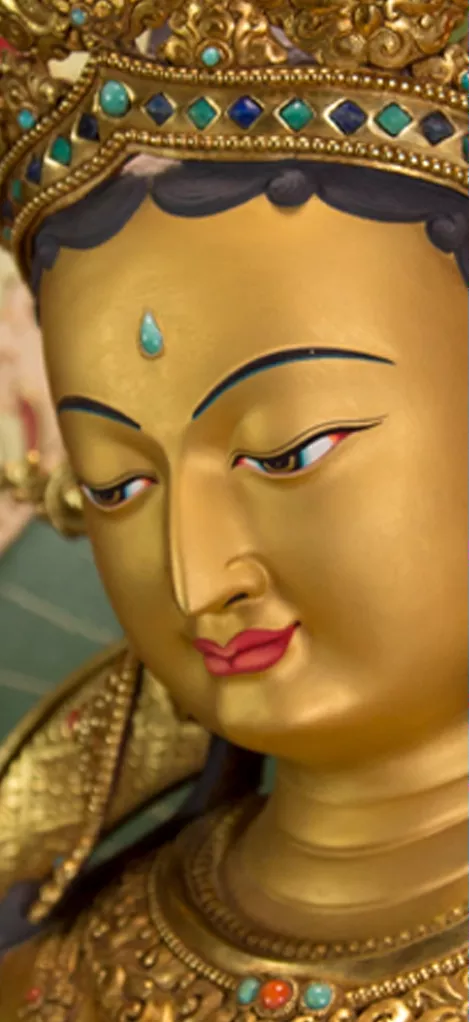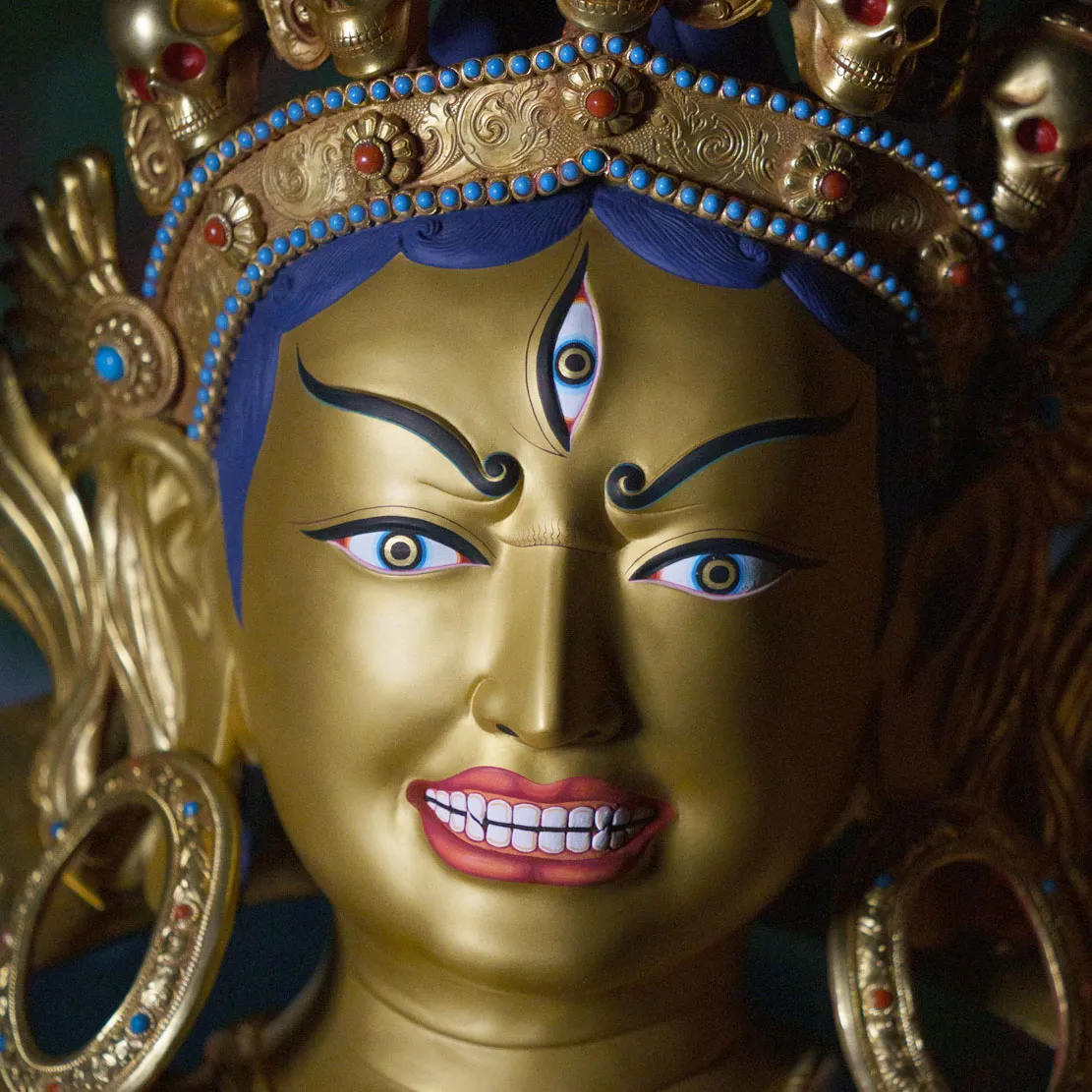The Dzinpa Rangdröl Cycle
The Tibetan word Dzinpa means “to cling” or “to fixate.” Rang means “natural” or “innate” and dröl means “to liberate.” Together, the terms Dzinpa Rangdröl may be translated as Natural Liberation of Clinging or Fixation— a path in which our dualistic clinging to self and other is naturally liberated in its own place. Dzinpa Rangdröl is the core text of Do Khyentse’s extensive terma (treasure) cycle called the Yangsang Khandro Tug Tig (Exceedingly Secret Heart Essence of the Dakini). Within this cycle are all of the different types of practices that comprise the full Tibetan Buddhist path.
Over the course of the program, a close cohort of fellow practitioners will develop, providing a sense of camaraderie and support; there will be community-building groups and a buddy system while engaging in these profound practices. Each practitioner will also be assigned a Kalyanamitra, a spiritual mentor, with whom they will communicate with monthly, get support, and share experiences.
Program Overview
The Foundation Program spans three years and covers the Ngöndro, or ‘that which goes before,’ which is the gateway practice for entering the profound lineage of the Dzinpa Rangdröl cycle. This program is designed so that participants will complete the Dzinpa Rangdröl Ngöndro at the end of the three years. Since the time of Guru Rinpoche in the 8th century, the practice of Ngöndro has been completed by many great yogis and yoginis, many of whom have taken Ngöndro as one of their core practices. Commensurate with the complete body of the Dzinpa Rangdröl cycle, many practices in this Ngöndro are considered esoteric and in the past were given only as a practitioner’s second Ngöndro. In this Ngöndro, one completes the outer preliminaries. The contemplations on the Four Thoughts that turn the Mind: Precious Human Body, Impermanence, Karma, and

Suffering of Samsara, plus the blessings of the Lama. Following those are inner preliminaries 100,000 prostrations with refuge; 40,000 Bodhicitta prayers with accompanying compassion meditation; 100,000 Vajrasattva mantras; 100,000 Mandala Offerings; and 1,200,000 Guru Yoga mantras.
Each of these practices are accompanied by visualizations. The purpose of these practices is to purify the body, speech, and mind and to accumulate merit, akin to preparing the foundation before a house is built. Practitioners should expect to practice 2-3 hours a day.
Those who have already completed a Ngöndro in another lineage will be required to do 10% of the Dzinpa Rangdröl Ngöndro in order to enter into the second level/Complete Transmission Program. To receive these instructions and begin the practice, there are no additional prerequisites; however, it is a practice that requires great effort and commitment. The application and interview process must also be completed.
The second section of the program builds upon the Foundation Program and is for those who have completed the Ngöndro requirement. The five years of this curriculum include the Deity Yoga practices of Tsogyal Karmo and Tröma, Tsalung yoga (adjusted for those with physical limitations), and the Dzogchen preliminaries of Outer and Inner Rushen, followed by Tregchö and Tögal. There are also various other yogic and Dzogchen practices attached to this cycle, including three main Chöd practices of varying lengths. There will be both group and solitary retreat requirements as well as a commitment to regular two-hour daily practice.
Prerequisites: Completing the Foundation Program (Ngöndro) or 10% of the Dzinpa Rangdröl Ngöndro if you have already completed Ngöndro in another lineage. An interview may be requested and acceptance into the program is required. What is unique in Gateway is you will have support from your cohort and Kalyanamitra during the process.
Foundation Program Details
The primary focus of the Foundation Program is training in the Dzinpa Rangdröl Ngöndro, the Foundational Vajrayana practices, which include:
- Contemplations on the Four Thoughts That Turn the Mind toward the Dharma
- Training in the two kinds of Bodhicitta: Absolute and Relative
- The Four Immeasurables: Love, Compassion, Joy, and Equanimity
- Progressive Stages of Emptiness
- Barlung Breathing
- Refuge & Prostrations
- Training in the two kinds of Bodhicitta: Absolute and Relative
- The Four Immeasurables: Love, Compassion, Joy, and Equanimity
- Vajrasattva mantra recitation
- Mandala Offering
- Guru Yoga
- Dream Yoga
- Parchangma Chöd will also be taught in the Foundation program


Each year, you will participate in the following:
- An annual retreat with Lama Tsultrim Allione, Tulku Sang-ngag Rinpoche, Dorje Lopön Chandra Easton and/or Tsalung Lopön Beth Lee-Herbert at Tara Mandala Retreat Center and/or through online programs.
- Monthly teachings and/or cohort check-in calls via Zoom with Lama Tsultrim, Tsalung Lopön Beth, Dorje Lopön Chandra and/or other mentors.
- Regular email and/or Zoom contact with your Kalyanamitra.
- Required daily 2-3 hour personal practice commitment (depending on the speed you do the practices at, it will take longer in the beginning as you learn the practices)
- Occasional daylong, weekend or longer personal retreats as appropriate
- White Dakini Drubchö retreat at Tara Mandala – first 2 years of the Foundation Program participation is optional, but the third and final year in-person attendance is required as this Drubchö provides the empowerment for the entire cycle of teachings. Live Streaming options may be available. The Drubchö also serves as a wonderful opportunity to come together as a Dzinpa Rangdröl Sangha with all cohorts on a semi-regular basis to purify samaya and rejoice in the blessings of the lineage.
- Becoming a Sustaining Sangha member of Tara Mandala.
- Taking the Parchangma Chöd Retreat.
- In addition, those participants who have not yet completed the Three Yanas program and/or the upcoming Heart of Buddhism: A Year Long Buddhist Studies Program will be required to do so during the first three years of the program. If you are unable to receive these teachings in their entirety by the end of the Foundation Program, then you must complete this by the end of the Complete Transmission (Part 2) Program at the very latest. Please note that exceptions could be made to this depending upon past comparable study.
Complete Transmission Program Details
The Complete Transmission Program will take those who have completed the Dzinpa Rangdröl Ngöndro requirement into the progressive stages that are traditionally practiced during the three-year retreat.
The five-year Complete Transmission Program will consist of the following:
Year 1: Yidam Practices:
In this year, you will learn two deity (yidam) yoga practices:
Tsogyal Karmo (The White [Dakini] Yeshe Tsogyal) retreat in person followed by daily practice (two hours of practice per day) including approach, accomplishment, activities, and fire puja.
Tröma Nagmo (The Black Fierce One) retreat in person followed by daily practice including approach, accomplishment, activities, and fire puja.
Year 2: Tsa-Lung:
This consists of a six-day in-person retreat followed by one year of daily home practice. It includes Trulkor (Tibetan yoga), Tummo (inner heat), and Milam (dream yoga). Those with physical constraints preventing Tsalung practice will be given guidance and support.
Year 3: Rushen:
This year includes an in-person (length to be determined) Rushan (Dzogchen preliminaries) retreat followed by one year of daily practice, cycling through the Rushan training including Lujong (body training), Nangjong (speech training), Semjong (mind training), Nalbab (resting in naturalness), and Sorzhug (entering into freshness).
Year 4: Trekchö
This year includes the Dzogchen practice called “Break-Through.” There will be an in-person retreat (length to be determined) followed by one year of daily practice.
Year 5: Tögal
This final year includes the Dzogchen “Leap-Over” practice, consisting of an in-person retreat (length to be determined) followed by daily practice throughout the year.
You will have a completion ceremony at that year’s Drubchö retreat.

